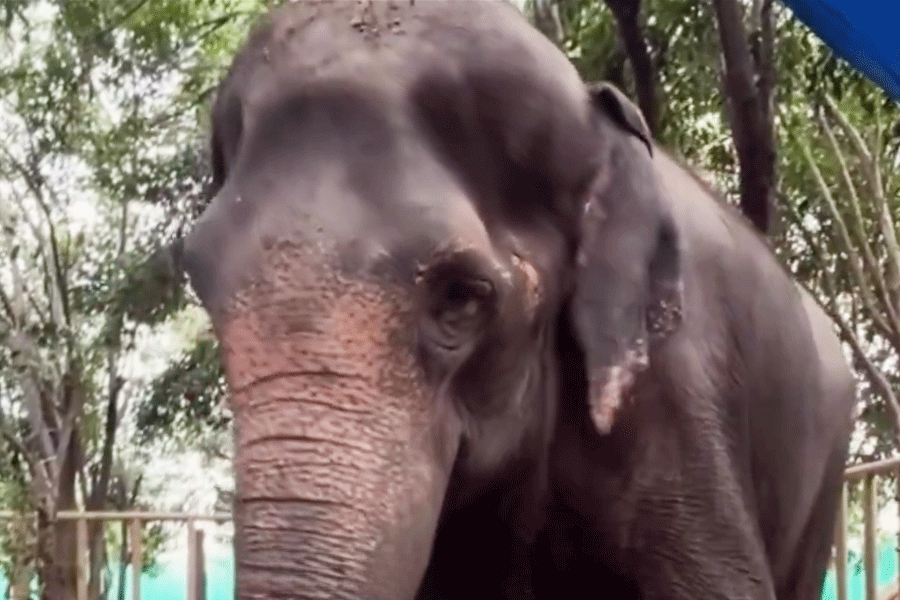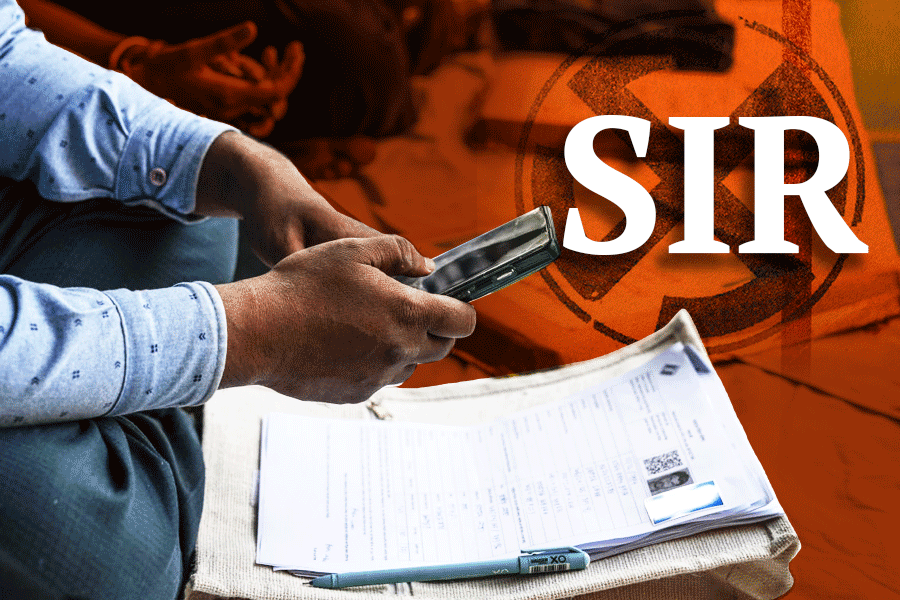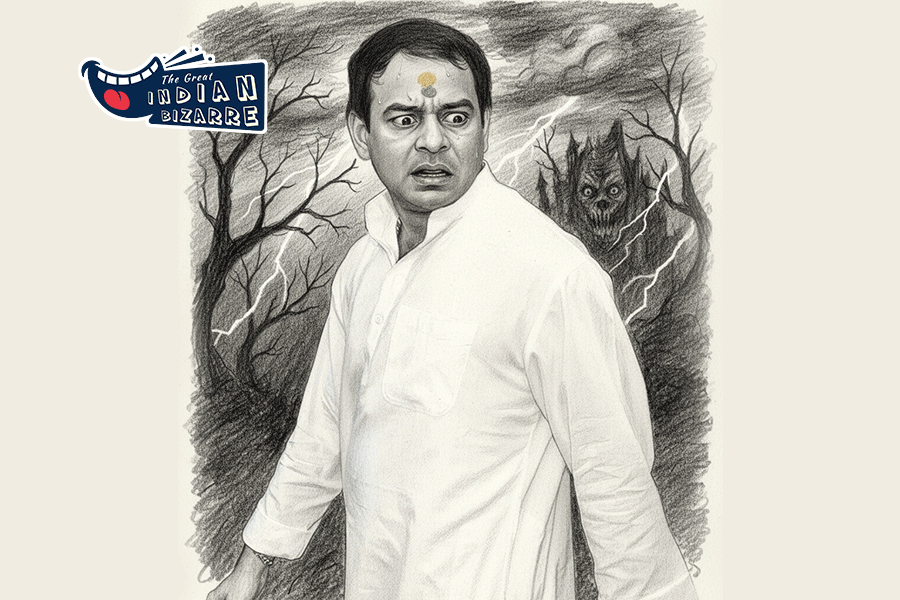 |
| People use khatolas to carry elderly pilgrims up Pretshila hills in Gaya on Tuesday. Picture by Suman |
Gaya, Sept. 13: The annual Pitripaksh Mela is a seasonal source of income for Musahar caste members near Pretshila hills, 12km north-west of the town.
On the third day of the 17-day long Pitripaksh, pinddaan is offered at Pretshila. However, pilgrims, most of whom are the elderly, have to climb at least 676 steps to reach the hilltop. A hard task, indeed. But still, the pilgrims reach the top of the hill to perform the pinddaan rituals, courtesy villagers living around the Pretshila hills, most of whom are of the Musahar caste.
Come Pitripaksh, these villagers are ready with their khatolas (palanquins) to carry the elderly or differently abled pilgrims to the hilltop. Rest of the year, these villagers work as labourers on farms or at stone-crushing units to earn a livelihood.
This year, more than 75 khatolas can be seen in a row at the bottom of the hill waiting for pilgrims.
Although these modern-day kahaars (the bearers) are still not allowed to step inside temples at some places because of their caste and social status, they are allowed to carry pilgrims to the Pretshila hills — a place for the salvation of ghosts — in their khatolas. The priests also don’t have any objections.
Pinddaan on the third day of Pitripaksh is performed for the salvation of souls of near and dear ones killed in an accident or died an unnatural death. It is believed that Lord Brahma had performed pinddaan here and his footprint can still be seen at the hilltop.
Some khatola carriers, like Mahendra of Neyazipur, Churaman Manjhi and Vineshar Manjhi of Chhattubagh village and Rampravesh, Prayag Manjhi, Rajnath Manjhi, Sanjay and Bakhauri Manjhi of Channa village in the district have been in this business for long. They charge their customers according to their weight. This year, they are charging between Rs 300 and Rs 400 from pilgrims, who wish to be carried to the hilltop.
Mahendra told The Telegraph that sometimes as many as four kahaars are required to carry an overweight pilgrim. The amount charged in such cases is then divided accordingly.
On an average, a kahaar’s daily income during Pitripaksh Mela is around Rs 400. Churaman, Rampravesh and others said it is their ancestral occupation and they would carry on as long as possible.
But after Pitripaksh, it is back to farms or stone-crushing units.
Most of these kahaars are landless and do not have the capital to purchase seeds, fertiliser or cattle to plough the field. The villagers said they don’t get any help from the government either.
They claim the government’s help is necessary for these kahaars’ social and financial uplift. There is a school in the area but most of their children don’t attend it. Prayag Manjhi had attended school till Class VI but his son is illiterate. Rampravesh has four children and none of them go to school.











